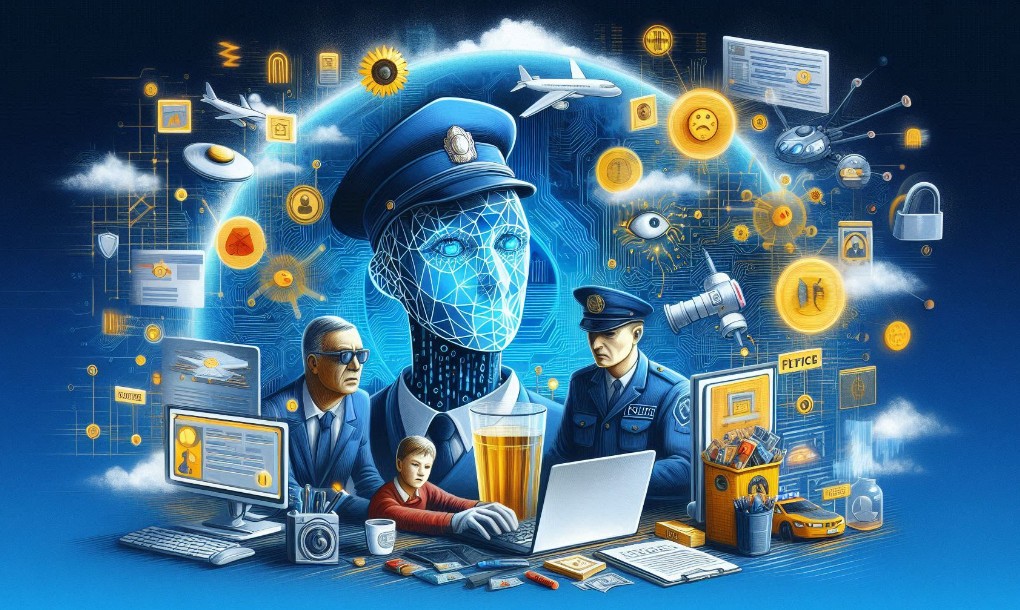In recent years, there has been a significant advancement in the field of Artificial Intelligence (AI) and Augmented Reality (AR). These technologies have become increasingly popular and have the potential to enhance virtual experiences in various fields such as gaming, education, healthcare, and...
18+Smart Filters and the Role of AI in Enhancing Internet Safety

As the digital landscape continues to evolve, the need for advanced technologies to defend against ever-growing threats has become crucial. Cyberattacks, data breaches, and harmful content can significantly affect users, making robust defense systems essential in the modern world. Cutting-edge solutions powered by machine learning and artificial intelligence are rapidly becoming integral in securing personal and organizational activities on the web.
Artificial intelligence is reshaping the way we approach security, offering dynamic, real-time protection that goes beyond traditional methods. With the ability to analyze vast amounts of data, AI-driven systems can swiftly identify and neutralize malicious behavior before it impacts users. This technology’s ability to adapt and learn from new threats makes it a key player in the ongoing battle against digital risks.
By integrating intelligent tools into daily online interactions, users can feel more confident navigating the digital world. These innovations not only reduce the chances of falling victim to cybercrime but also ensure that personal data remains safe and secure, even in the face of sophisticated attacks.
AI Enhances Digital Security
Artificial intelligence has become a cornerstone in the fight against cyber threats. By leveraging machine learning algorithms and predictive analytics, these advanced systems provide real-time surveillance, detect anomalies, and respond to malicious activities almost instantly. Unlike traditional methods, AI solutions continuously evolve by learning from patterns, which allows them to stay ahead of emerging dangers in the digital landscape.
The ability of AI to process vast amounts of data in real-time makes it incredibly effective at identifying potential risks, from phishing attempts to malware attacks. Through constant adaptation and refinement, these systems can offer a higher level of protection than conventional security measures. This dynamic approach significantly reduces the likelihood of successful intrusions or breaches.
AI Technology Benefits Examples of Use
| Machine Learning | Detects new, unknown threats by analyzing data patterns | Spam email filters, malware detection systems |
| Behavioral Analysis | Monitors user actions for irregularities, identifying suspicious behavior | Fraud prevention in online banking, real-time anomaly detection |
| Predictive Analytics | Anticipates potential risks and blocks threats before they occur | Preventive security systems, proactive risk management |
AI's role in modern digital defense strategies cannot be overstated. It not only enhances detection capabilities but also improves response times, ensuring that protective measures remain effective even in the face of rapidly evolving threats.
The Role of Filters in Protection
In today's digital world, the need to guard against harmful content is more pressing than ever. With the rise of malicious websites, harmful ads, and inappropriate material, sophisticated tools are essential for providing a secure browsing environment. These technologies automatically analyze online data to ensure that users remain safe from exposure to potential dangers while interacting with digital platforms.
Advanced filtering solutions use complex algorithms to block unwanted content, providing an additional layer of defense against threats. These systems continuously assess incoming data, identifying harmful patterns and preventing access to dangerous sources. Their ability to adapt and learn from new risks allows them to stay ahead of evolving online dangers.
Types of Content Blocked
- Malicious websites and phishing attempts
- Explicit or harmful media
- Intrusive ads and pop-ups
- Suspicious links and downloads
Key Benefits of Filtering Technologies
- Enhanced security by preventing access to harmful sites
- Improved user experience by minimizing distractions and irrelevant content
- Real-time detection and blocking of emerging threats
- Increased control over the browsing environment for users and organizations
By acting as a first line of defense, these tools help ensure that users are shielded from potential harm, creating a safer and more enjoyable experience while interacting with digital platforms.

Preventing Cyber Threats with AI Technology
As digital threats continue to grow in complexity, advanced technologies are becoming essential in the fight against cybercrime. Artificial intelligence has emerged as a powerful tool in identifying, analyzing, and neutralizing potential risks before they can cause harm. Through the use of machine learning and data-driven analysis, AI systems can recognize harmful behavior patterns and respond in real time to prevent damage.
AI technology helps identify emerging threats by constantly analyzing vast amounts of data. This proactive approach allows it to detect unusual activity, anticipate potential attacks, and block harmful interactions before they escalate. By adapting to new challenges and learning from past incidents, AI-driven solutions offer dynamic, robust protection for individuals and organizations alike.
AI's Approach to Cybersecurity
AI Technology Function Examples
| Machine Learning | Analyzes data to identify patterns and predict potential risks | Intrusion detection systems, fraud detection |
| Natural Language Processing | Monitors communication for harmful content, phishing attempts, and scams | Email filtering, social media monitoring |
| Behavioral Analytics | Detects irregular actions and warns of malicious behavior | Real-time threat detection, user authentication systems |
Advantages of AI in Cyber Defense
- Faster identification and mitigation of emerging threats
- Ability to handle large volumes of data and analyze patterns in real time
- Continuous adaptation to new attack methods and tactics
- Reduction in human error and increased efficiency in threat response
AI-driven solutions are revolutionizing the way cybersecurity is approached, providing an automated, adaptive, and highly effective method for preventing digital threats across various platforms.



